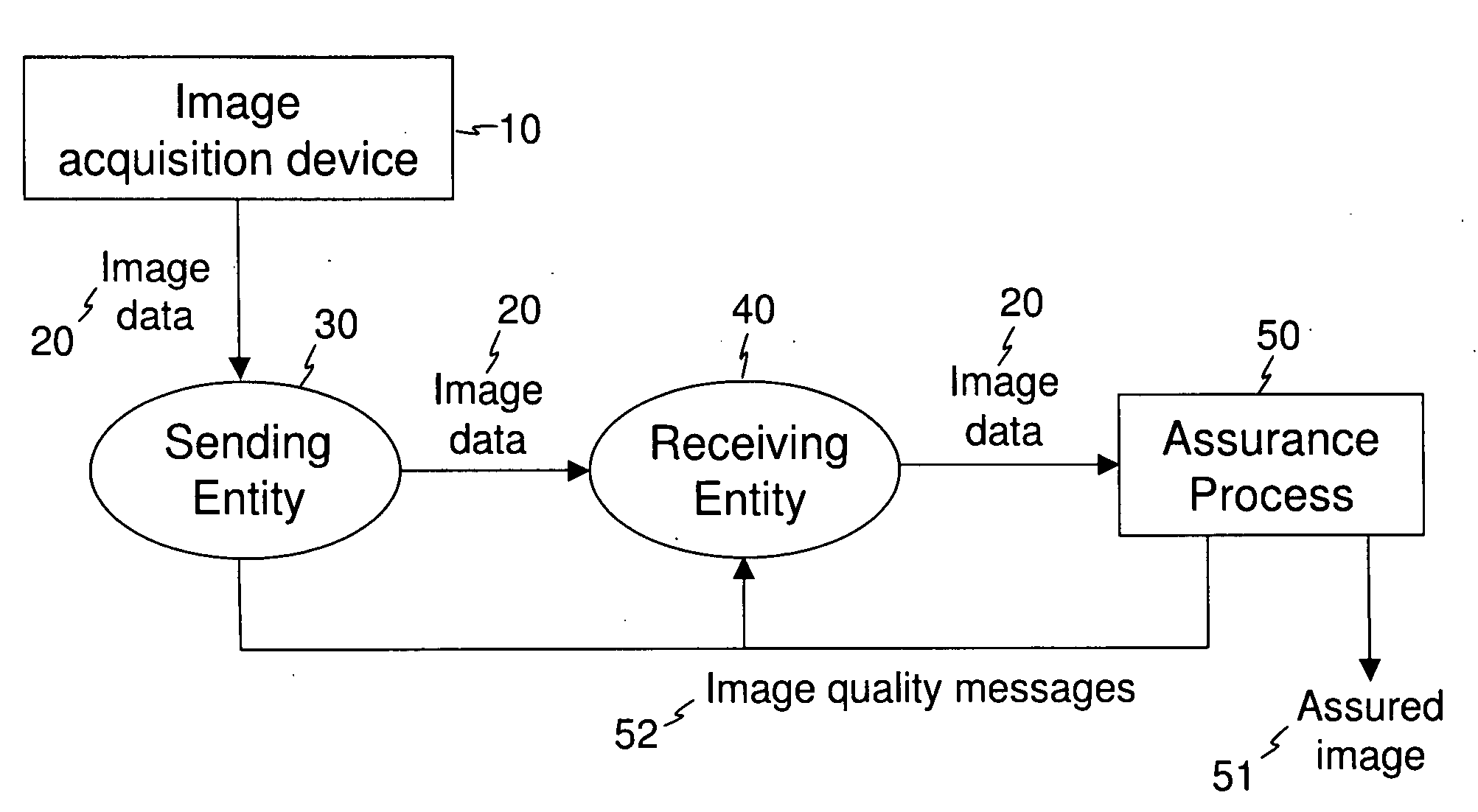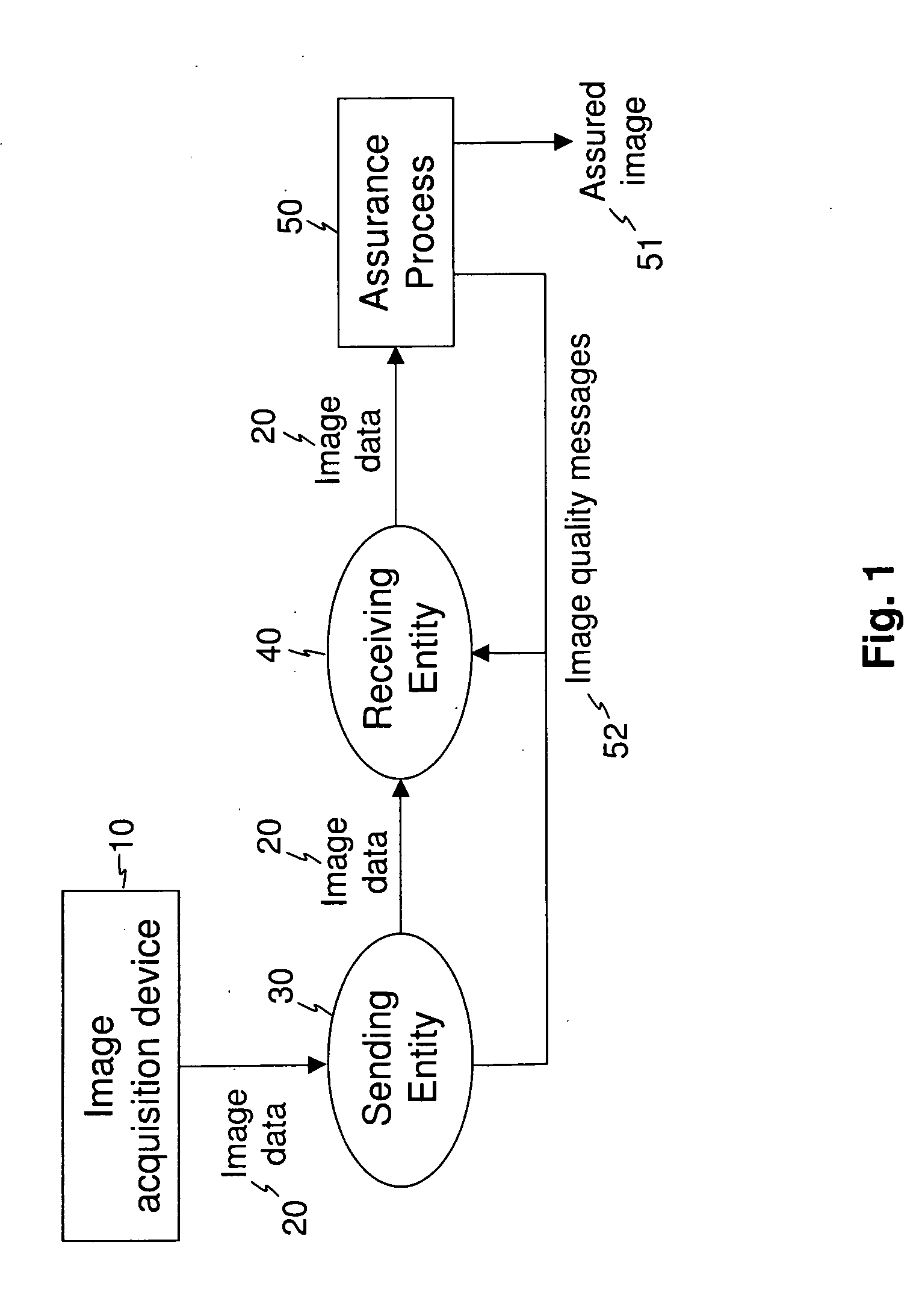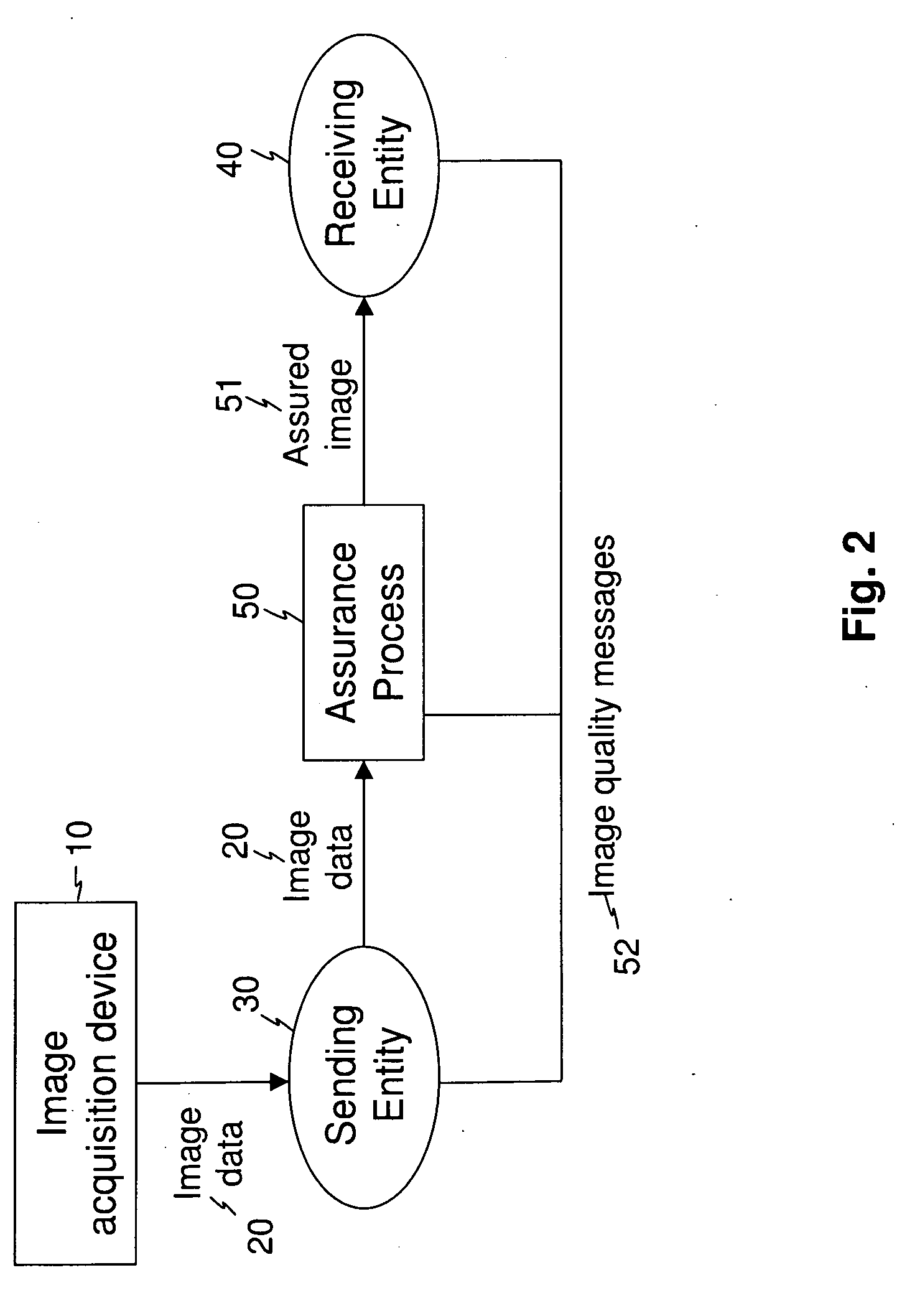Image transfer with secure quality assessment
a quality assessment and image technology, applied in the field of data integrity in digital image processing, can solve the problems of limited value of identification photographs as security tools, economic feasibility, and inability to read documents intended for a person's reading,
- Summary
- Abstract
- Description
- Claims
- Application Information
AI Technical Summary
Benefits of technology
Problems solved by technology
Method used
Image
Examples
Embodiment Construction
[0042]In the disclosure that follows, elements not specifically shown or described may take various forms well known to those skilled in the art.
[0043]The invention is directed to forming a digital file from image data generated by digitization of a physical medium or a physical scene. The physical media may, for example, include any of various types of written, printed, or imaged records such as bank checks, X-ray film, photographic film, historical letters, scholarly papers, photographs, income tax forms, paper voting ballots, and book or periodical pages, for example. Physical scenes include any physical entity or entities, such as people, places, and objects, for example, that have been imaged by an image capture device. Embodiments of the present invention encompass image data from any type of digital image capture device. Some types of image capture devices, such as scanners, pass physical media over one-dimensional (1-D) line sensors to construct a two-dimensional (2-D) image...
PUM
 Login to View More
Login to View More Abstract
Description
Claims
Application Information
 Login to View More
Login to View More - R&D
- Intellectual Property
- Life Sciences
- Materials
- Tech Scout
- Unparalleled Data Quality
- Higher Quality Content
- 60% Fewer Hallucinations
Browse by: Latest US Patents, China's latest patents, Technical Efficacy Thesaurus, Application Domain, Technology Topic, Popular Technical Reports.
© 2025 PatSnap. All rights reserved.Legal|Privacy policy|Modern Slavery Act Transparency Statement|Sitemap|About US| Contact US: help@patsnap.com



